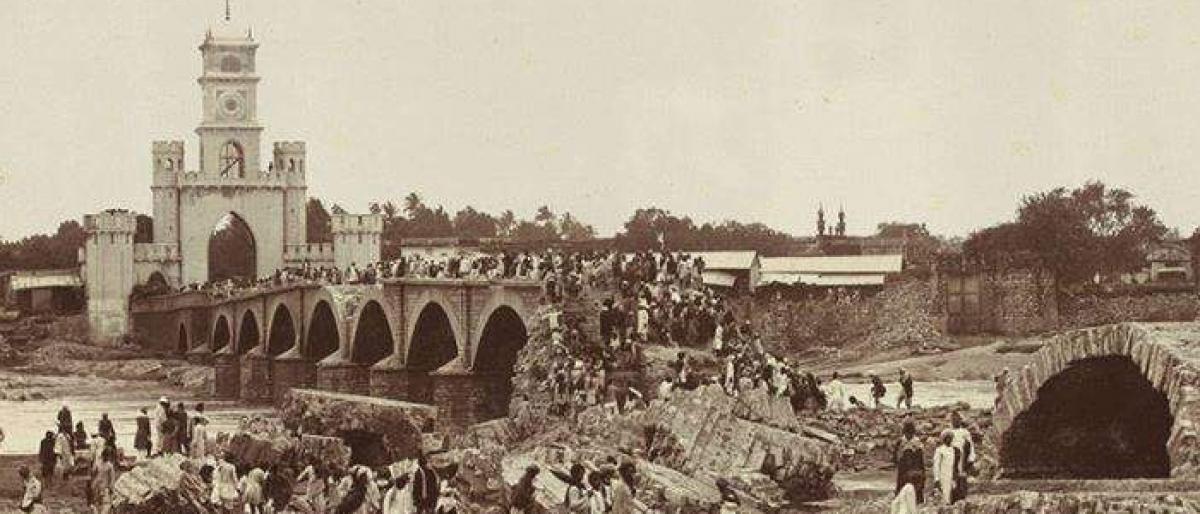Live
- Allu Arjun Questioned in Sandhya Theater Stampede Case: Investigation Updates
- Christmas festivities pervade Warangal
- TTD announces the schedule for release of March 2025 quota tokens
- Odisha’s Dilishaa crowned KIIT NanhiPari
- STA inks MoU with IIT Madras to improve road safety
- OEC to prepare coastal protection plan for Odisha
- District SP inspects Kerameri police station
- Women urged to become self-reliant
- Indiramma House Survey should be done transparently: Veerlapalli
- Ponnam urges KGBV teachers to call off strike
Just In

How many people have died we dont have exact figure All 50 colonies were swept away by the water, where over 4,000 people perished to the fury of the Musi The total death toll varies with different reports
“How many people have died we don’t have exact figure. All 50 colonies were swept away by the water, where over 4,000 people perished to the fury of the Musi. The total death toll varies with different reports.
But the flood affected at least 2,00,000 people, who were left dead or homeless,” shared historian Sajjad Shahid during a talk held at Kalakriti Art Gallery, Hyderabad, to mark the 110th year since the Great Musi Flood of 1908.
After heavy rainfall and cloud burst, on September 28, 1908, Musi river was in spate and this caused death and destruction across most part of Hyderabad, a city that has flourished on its banks.
People lost their homes, their loved ones. Amjad Hyderabadi too was one of the victims. He watched his mother, wife and daughter being washed away in the floods and has written ‘Qayamat-e-Soghra’ – that is mostly the saga of suffering during the floods.
Jo Hum ne saha hai, na saha hoga kisi ne
Dekha hai jo kuch hum ne, un dushman bhi na dekhe
These are lines penned by Amjad Hyderabadi who was saved by a tree. It is the same tree that has become legendary in the years to come.
The famous tamarind tree in the Osmania Hospital park that has saved the lives of 150 people who took shelter on the tree continues to stand proud and well preserved till date.
He also wrote Itni Dar'ya May Bhi Na Duba Amjad Dub'nay Valo Ko Bus Ek Chul'lu Kafi Hai
When the Nizam of Hyderabad, Mir Mehboob Ali Pasha, took to the streets to survey the damage, he said ‘llaale pad gaye, khichdi khatta khaane ki bhi sakat nai rahi’ and tears rolled in his eyes. On this, Sarojini Naidu writes in her poem ‘The tears of Asif’, where she explains how Nizam broke down after seeing the plight of his city before him. Sajjad Shahid shared how the day became landmark and came to be known as Tughyani and people would relate events and significant days in their lives with reference to Tughyani.
The art gallery in collaboration with the Kalakriti Archives and the Krishnakriti Foundation also hosted an exhibition of photographs mostly from this period; of monuments and sights of flooded landmarks of the city that are powerful and make for brilliant documentation of one of the significant events in the city history – the story of a flood that has left many memories and lessons to be learnt.

© 2024 Hyderabad Media House Limited/The Hans India. All rights reserved. Powered by hocalwire.com







